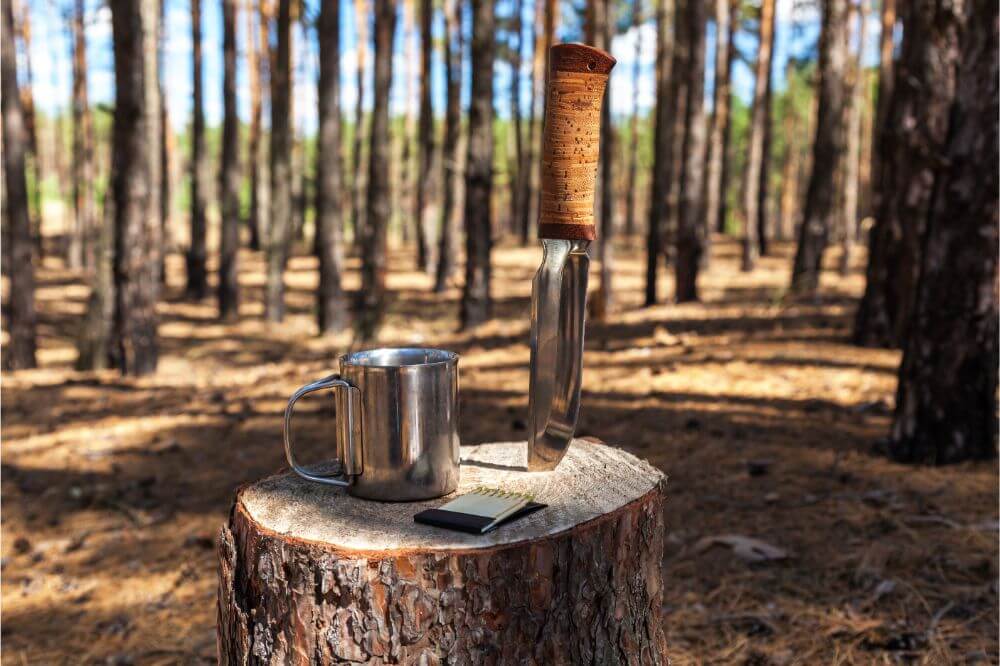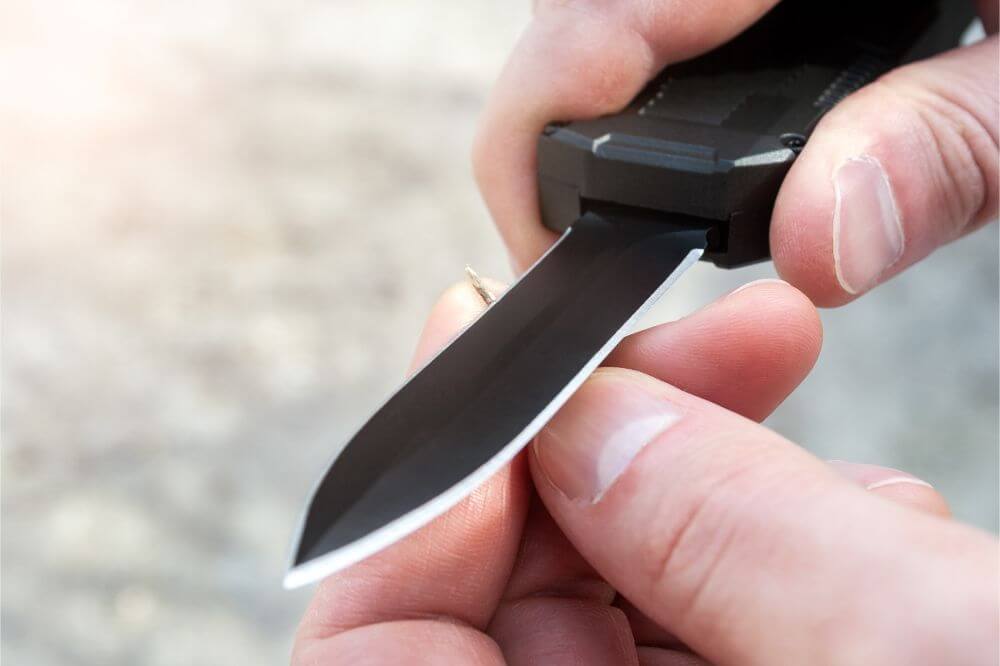If you are planning on heading into the woods, whether hunting or camping or you just spend a lot of time outdoors and want to be prepared for any eventuality, something you should carry is a high-quality survival knife.
There are, of course, many different features to take into account when choosing the right survival knife. However, the most essential factor to consider is your survival knife’s material, specifically the blade.
Knives can be made of many types of metal, but they’re not all the same, and they don’t all have the same characteristics. This article looks at the different kinds of steel that can be used for survival knives, and we’ll then decide which we think is the best.
Various Types of Survival Knife Steel
A variety of metals are used to make survival knives, with some being more common than others. Let’s look at a few of the most often used metals, their features, pros, and cons.
Stainless Steel
One of the most common materials used is stainless steel for relatively low-end and moderately priced survival knives. Standard stainless steel is an excellent material to use for a survival knife because it is pretty affordable, providing a low-cost knife that still has a decent level of quality.
The main benefit of stainless steel is that it won’t rust or corrode, which many other metals experience. In addition, stainless steel is quite durable, but with that said, it’s not the most durable nor hardest of metals. For this reason, a regular stainless steel survival knife won’t have the best edge retention and will need to be sharpened regularly.
AUS-8 Stainless Steel
The next type of stainless steel is AUS 8 stainless steel. This is somewhat similar to regular stainless steel but has been refined to a much higher degree. Technically speaking, this type of stainless steel features a much higher carbon content than standard stainless steel, but it’s still not known as high-carbon stainless steel.
AUS 8 stainless steel is one of the better types of low-end steel. Most people would say that this is a mid-range type of steel.
Now, of course, AUS 8 stainless steel is a bit more expensive than standard stainless steel, but due to its high carbon content, it’s also a bit harder and has better edge retention. However, it’s still stainless steel, which means that it is also corrosion and rust-resistant.
CROMOVA Stainless Steel
CROMOVA stainless steel is another type of stainless steel used for survival knives, although it’s not overly common. This stainless steel contains high concentrations of chromium and vanadium, and in terms of rust, stain, and corrosion resistance, this is one of the best types of stainless steel.
That said, it is more often used for kitchen knives than survival knives because it’s not overly hard or good at retaining its edge. It is a very durable type of steel, but you will need to sharpen the blade regularly.
VG-10 & VG Max Stainless Steel
Another excellent knife steel is VG stainless steel, either VG10 or VG Max. It has a high vanadium content and plenty of carbon. However, although it contains a good amount of carbon, it’s still defined as stainless steel, not high-carbon steel.
However, its composition means that it’s a mix between stainless and high-carbon steel in the sense that its overall durability, sharpness, edge retention, and stain- and rust-resistance are all just above average.

1095 High-Carbon Steel
If you are looking for knife steel that is super sharp, hard, durable and retains its edge extremely well, 1095 high-carbon steel is the way to go. The high-carbon content allows for excellent hardness and durability. However, the downfall with 1095 HC steel is that it will stain, rust, and corrode with minimal moisture exposure.
D2 High-Carbon Steel
D2 high carbon steel has very high amounts of carbon and also a good deal of chromium. This type of high carbon steel is not quite as hard or durable as 1095 HC steel but almost as tough, and it comes with some added corrosion resistance. So, D2 is not quite as durable as 1095 but is more corrosion resistant.
Damascus Steel
Above all, Damascus steel looks very nice. The patterns are one of the main features. Moreover, Damascus steel is quite durable and good at retaining its edge. However, it easily rusts and corrodes and is relatively expensive, which is why it’s not usually a material of choice for survival knives.
154CM Steel
Finally, we have 154CM steel, which is a very high-carbon stainless steel. It’s both stainless and high carbon and has molybdenum. The result is that you get the best of both worlds – all the hardness, toughness, and edge retention of high-carbon steel, along with the stain-, rust-, and corrosion-resistance of stainless steel.
The Verdict
The bottom line is that the best type of steel to use for survival knives is 154CM steel. It has all the pros of high-carbon and stainless steel, yet with none of the drawbacks – except for being a bit pricey.

